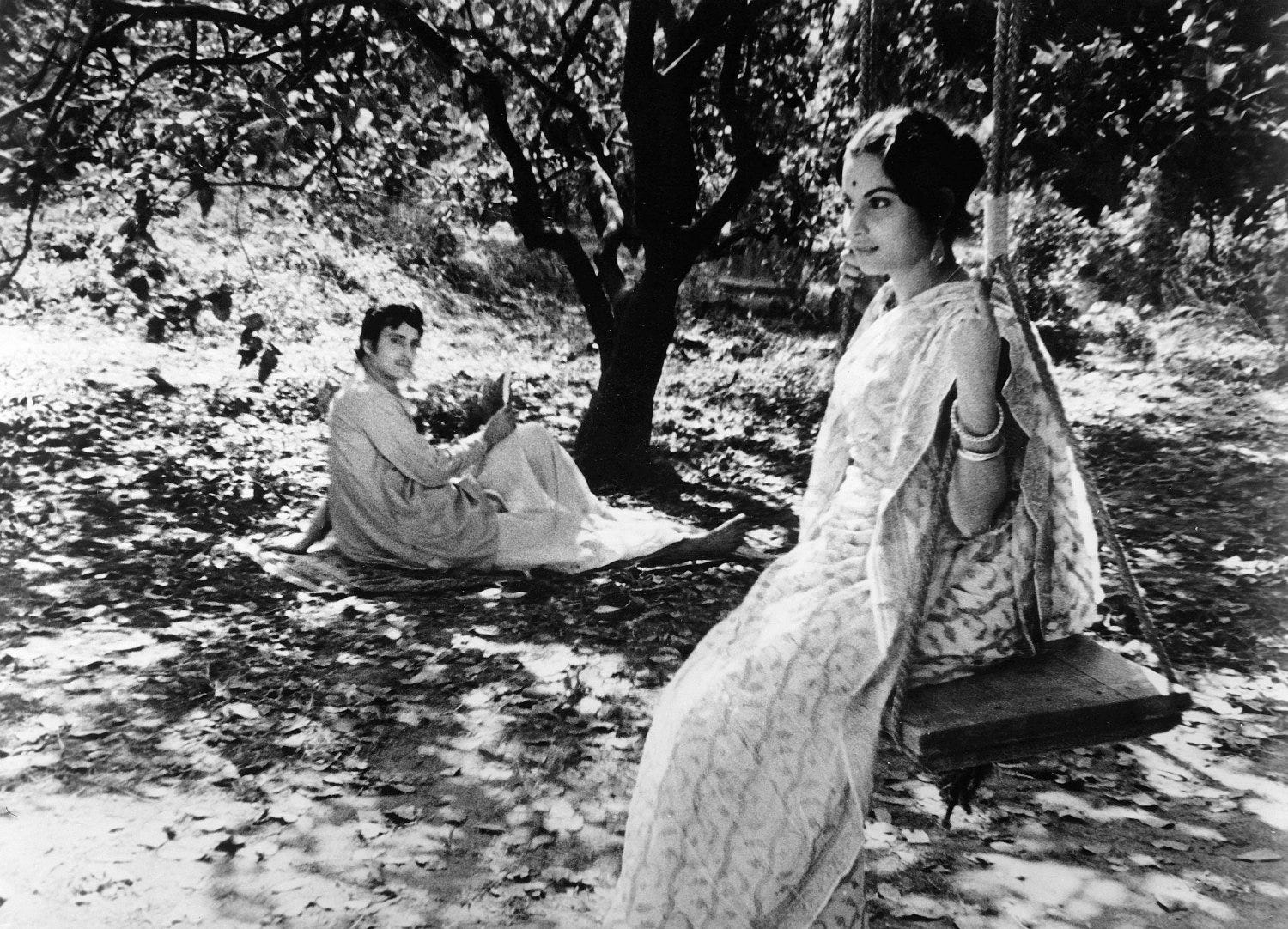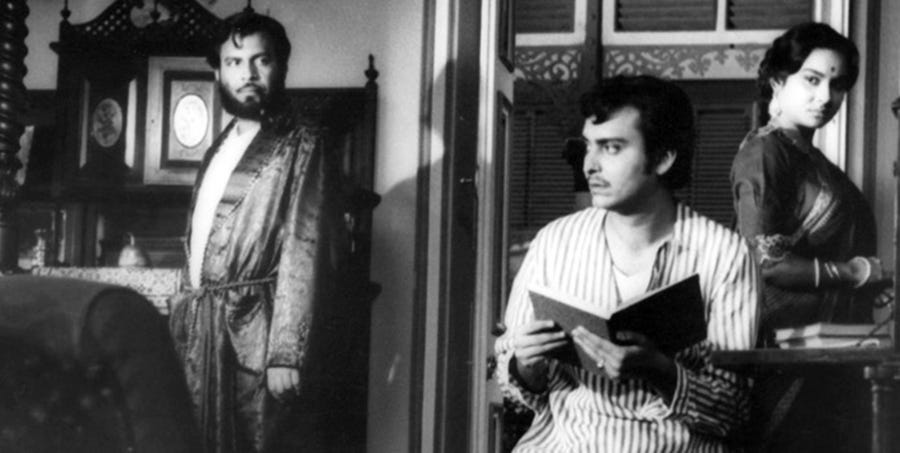The Melody of a Cuckoo: A review of Satyajit Ray’s Charulata

The Melody of a Cuckoo:
A review of Satyajit Ray’s Charulata
Charulata or The Lonely Wife is Satyajit Ray’s
sixteenth film. In one of the interviews, he had mentioned that Charulata is his most favourite personal
film. Even several critics opine that Charulata
is the finest of Ray’s works.Despite being released half a century ago, Charulata continues to amaze film lovers
and critics with its aesthetically appealing visuals and lyrical rendering of
the story.
Charulata is based on Rabindranath Tagore’s
novella Nastanirh (The Broken Nest).
The plot of the story revolves around Charulata (played by Madhabi Mukherjee)–
the lonely wife of Bhupati, who runs a political newspaper in Bengal. Although
the timeline in the novella is 1900s, Satyajit Ray has adopted it to be in 1880s
where the Bengal Renaissance was at its peak. Bhupati is a workaholic, who is highly
influenced by Brahmo philosophy and
is passionate about bringing a change in society. In his view, modern writers must
address political developments of the nation, rather than misleading society
through creative writing. He prioritizes work over his wife
and regards his newspaper –The Sentinel as
his wife’s rival. Although Bhupati learns that Charu feels lonely, his
dedication to the newspaper prevents him from spending time with her.

Charulata does not lack material comfort. She lives in an
extravagant Victorian-Bengali styled bungalow taken care by the servants and
has all the time in the world. However, she is lonely and childless, lacking time
and attention from her husband. Charu knits clothes, reads books and curiously watches
the outside world through a window with her binoculars. The scene where her
husband walks in the corridor engrossed in reading a book while Charu stands
unnoticed, establishes two things -she anguishes being ignored, and feels like
a bird inside a golden cage. On a metaphoric level, Charu watching her husband
walk away with her binoculars symbolizes that she is merely a spectator to
everything, i.e. detached from him, as well as the luxuries of his bungalow.
The story develops further with the arrival of Amal, played
by Soumitra Chatterjee. Amal is Bhupati’s younger cousin who is inspired by
neo-literary movement. Although there are ideological differences between Amal
and Bhupati, they have a good understanding among each other. Satyajit Ray
introduces Amal into the story dramatically as he visits Bhupati’s bungalow
during a storm. As Amal and Charu have a common taste for literature and are of
same age group, Bhupati assigns him a secret task – to make Charu realize her
talents, by persuading her to write.

Those who have watched Charulata
would definitely not forget the swing scene. For the first time in the story, Charu is
seen to be outdoors on a swing, singing a poem by Rabindranath Tagore. The
melancholic music and lyrics leaves an impression on the audience, making them
contemplate on the meaning of life through Charu’s perspective. This is probably
the best scene in the entire film that reveals the workings of Charu’s inner
mind. She sings these lines –
The flowers sway to and fro, touching
each other as the breeze blows.
The water waves create sound, eventually
easing as the river flows.
The cuckoo in the garden sings
sweetly, hiding in the bushes of the tree.
Yet my heart feels sad terribly, and
I wonder why this bewilders me!
Although this poem is written by Tagore, it was borrowed by
Satyajit Ray into the film, as it clearly describes how Charu feels at the
moment. Charu through her binoculars then looks at a maid in distance who is
holding her baby, perhaps pondering over her own childless life. She then looks
at Amal, who is laying on the carpet, writing a piece of literature. This scene
draws a comparison between Charu and a bird placed in a golden cage. Here, the binoculars
act as a metaphor for Charu’s disconnectedness from the world. Though she
desires to feel, touch and experience the world of motherhood, love and freedom,
she is shielded in a beautiful cage. Despite minimal dialogues and predominant
silence, this scene effectively projects Charu’s emotional and romantic
affection for Amal.

Over the course of the story, she is emotionally drawn to
Amal’s dynamic personality. Although they develop affection for each other due
to their literary intimacy, Amal takes a stern decision to maintain distance
due to his own guilt and morality. Towards the end of the film, Bhupati’s
manager elopes away with his money – making his newspaper go bankrupt. Dismayed
by this betrayal, Bhupati is perplexed. He tells Amal, what really hurts him is
when someone close to him breaks his trust. Driven by his own guilt, Amal
silently leaves the bungalow at the middle of the night. Storm arrives again in
the scene where Bhupati and Charu learns about Amal’s departure. In the film,
Amal’s character is introduced and dissolved with a storm that acts as a
metaphor for disruption in the story. Charu is heartbroken, and she terribly
weeps in her bedroom. Bhupati notices this – but goes away from his home in
shock. Charu as well realizes that her husband had been watching her cry over
Amal. Thus, their home becomes a broken nest.

The interesting part in the film is its ending. Ray deviates
from the Tagore’s original story towards conclusion. In the film, Bhupati
returns to his bungalow, but is hesitant to enter it. Charu extends her hands –
meaning to request him to come in. He diffidently extends his hands without any
eye contact. The frame freezes even before their hands meet. This is followed
by a series of disruptive images. Perhaps, Satyajit Ray may have employed this
technique to keep the story more open ended. Hence it is never revealed whether
their marriage survives the test of fate or not. Will their nest remain broken?
There are several instances in the film that hints a deeper
meaning. For instance, in the swing scene, Amal asks Charu to lend him a book
as he finds an inspiration to write. However, she puts forth a condition that
whatever he writes in her book shall remain with her. But on realizing that
Amal is spending time with her only at the request by Bhupati and not because
of his own interest, she walks away abruptly. At this point in the story, it is
implied that she is drawn to him and hence she wants to treasure this moment by
keeping his work to herself. But he sends his work to a vernacular journal,
which accepts it for publication. This disappoints Charu, who decides to write
her own essay – as a challenge and as a means to catch Amal’s attention.
In terms of creative design, all the frames in the film
appear like a portrait – with importance given even to the minute details such
as the wallpaper, carpet designs, doorways, pillars etc. In addition, the
prolonged silence augments the beauty of each scene – particularly in depicting
the inner world of Charu. This silence, incorporated with the aesthetic visuals
make the film highly appeasing to the audience.
Charulata is the ideal woman portrayed on the Indian
silverscreen. In fact, the make up of Charulata has become so popular that even
the female protagonist of 2005 Bollywood film Parineeta – played by Vidya Balan was made to resemble that of Ray’s
Charu. What makes Charulata one of the finest film in the
history of Indian Cinema is the portrayal of the feminine. The film clearly
narrates the two sides of the feminine – as a typical Indian housewife, and as
a woman with desires. Satyajit Ray has achieved to balance the two sides
through meaningful characterization.
End Notes:
Movie Link: Charulata - A Film by Satyajit Ray
Image Source - Internet

Comments
Post a Comment